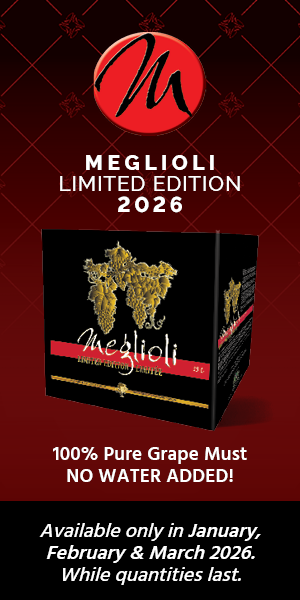Though tough to define as it can smell different to everyone, there is unfortunately no wine lab analysis panel you can run that says, “Yessir, you’ve got an over-abundance of Ivory Soap Flakes on your hands.” However, if you don’t like it in your wine, it’s a problem. Delving into the wine chemistry literature of my UC-Davis days and through more current articles, what I was able to coax out of the woodwork is a group of culprits: fatty acids.
I will spare you all the “acetyl-coA anabolism of cytosol etc.” details, but in general know that fatty acids are a product of fermentation, both of Saccharomyces cerevisiae (the “good guys”) as well as other spoilage yeast like Brettanomyces (definitely the bad guys). Under normal, healthy fermentative conditions, S. cerevisiae can produce various fatty acids like butyric acid, propionic acid, and decanoic acid, which have aromatic descriptors like fatty, rancid butter or “soapy”. When fermentation conditions are healthy (more on that later), small amounts of these fatty acids can do good things for the wine, like combine with alcohol and to form aromatic esters, which add nicely to the fermentation “bouquet” of a wine. Fatty acid ethyl esters, like ethyl hexanoate and ethyl octanoate, reportedly smell like wax and honey, which can be a positive. Fatty acids may also be produced in small enough amounts that they just contribute to complexity of a wine without becoming overwhelming.
Which brings us to “overwhelming.” I suspect you’ve got a fatty acid issue caused by your stuck/sluggish fermentation. S. cerevisiae can emit fatty acids when under fermentative stress, and stuck/sluggish fermentations can also provide a rich environment for inoculation by other yeast species, who, as your “good guy” yeast struggle, can take over or at least gain a foothold where you may not want them. Ambient yeast like Kloeckera and Candida genera as well as notorious spoilage yeast like Brettanomyces can all produce fatty acids as well; Brettanomyces is famous for pumping out offensive amounts of decanoic (also called capric) acid CH3(CH2)8COOH, which, in addition to smelling soapy or fatty can inhibit S. cerevisiae and can be a causative or contributing factor to a stuck fermentation.
Decanoic acid, a 10-carbon medium-chain fatty acid, is naturally found not just in wine but also in plant oils, milk and animal fats. It often has an unpleasant odor that is described as waxy, soapy or even “goaty” (hence the capric part of the name) and is used in soap, pharmaceutical and plastics production. It and its medium-chain fatty acid brethren aren’t like something you want in high concentration in your wine. Decanoic acid occurs naturally in wine fermentation, however spoilage bacteria like Brettanomyces can produce excessive amounts. Whichever fatty acid is your main culprit, it’s clear that you should do your best to prevent stuck fermentations in your wines.
Causes of a stuck/sluggish fermentation can include, but aren’t limited to:
• High or low fermentation temperature
• Very high must or juice sugar concentration
• Low inoculation level of yeast
• Poor-vigor yeast starter culture and insufficient hydration/build up before pitching
• Pesticide residue on grapes
• Nutrient deficiency in must or juice
• Juice that is too clear (<1% solids)
• Presence of yeast inhibitors (like excessive decanoic acid) from spoilage organisms
Methods to prevent high fatty acid production:
• Inoculate with known S. cerevisiae species
• Keep pH’s reasonable — under 3.80 for all wines.
• Add SO2 at crushing/initial pressing (for whites) of grapes to help knock down wild yeast populations.
• Ensure timely, complete primary fermentation.
• Do not underfeed. Use a complex yeast nutrient so you have a healthy, complete fermentation.
• Do not overfeed. Residual nutrients can feed the bad guys.
• Do not ferment too cold.
• Add a little air during fermentation (but protect the wine once fermented).
To rule out Brettanomyces (especially if you smell aromas like cardboard, mouse cage, sweaty leather or Band-Aid), which can quickly infect your whole cellar if you do not keep the wine isolated, send a sample out to a wine lab for a 4-ethyl phenol/4-ethyl guaiacol analyses.
But what can you do about the soapy taste in your wine right now? Try adding yeast hulls, AKA yeast ghosts, or freeze-dried dead yeast cells. They are inexpensive, easy to find at most winemaking suppliers, store almost indefinitely and are a great tool to have in your cellar. They can be used as a source of micronutrients for fermentation, can actually absorb toxins produced by yeast if you have a stuck fermentation happening, and can absorb fatty acids in wine. According to one study, just by adding 1 g/L yeast hulls to a fermentation or wine you can soak up about 50% of the decanoic acid in your wine. Yeast hulls also add micronutrients and survival factors to a fermentation. I add them at around 1–2 g/L at the first sign of a sluggish fermentation.
You can also experiment with adding some acid to your wine. A reading of 3.76 is a bit high for my tastes for a white, and you might find the high-pH “slippery” feeling you might experience in the mouthfeel to be lessened once you add a little tartaric acid. Do bench trials so you’re only adding what you want to bring the mouthfeel and taste into balance.





